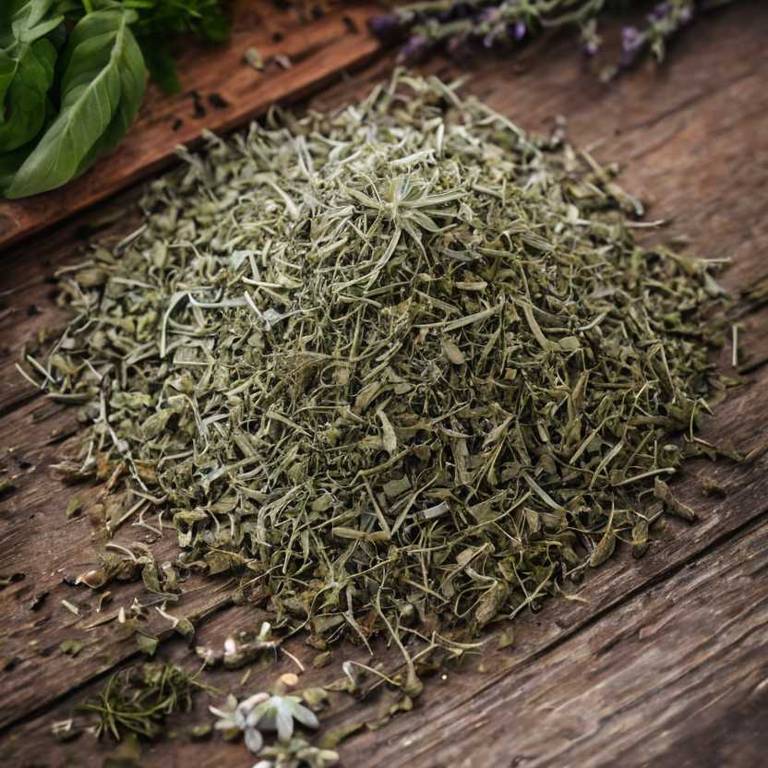Balsam Of Peru (Myroxylon Pereirae)
Information Reliability Score: 5/10
This score reflects the overall reliability of the information presented in this article. It is based on the quality of scientific evidence, accuracy of sources, and the transparency of references related to Myroxylon pereirae.
 Balsam Of Peru, scientifically known as Myroxylon pereirae, is a resinous substance derived from the sap of the balsam tree native to Central and South America. This aromatic tree resin has been utilized for centuries for its medicinal properties and is often regarded as a natural remedy due to its rich composition of bioactive compounds. Its primary benefits include anti-inflammatory, antiseptic, and antimicrobial properties, making it effective in treating skin conditions, respiratory ailments, and as a natural preservative. Traditionally, indigenous communities used Balsam Of Peru to treat wounds, soothe coughs, and as a protective balm for the skin. In modern wellness practices, it is valued for its role in aromatherapy, topical applications, and as a flavoring agent in food and cosmetics, with its distinctive balsamic aroma and the rare compound myrtenol contributing to its unique profile.
Balsam Of Peru, scientifically known as Myroxylon pereirae, is a resinous substance derived from the sap of the balsam tree native to Central and South America. This aromatic tree resin has been utilized for centuries for its medicinal properties and is often regarded as a natural remedy due to its rich composition of bioactive compounds. Its primary benefits include anti-inflammatory, antiseptic, and antimicrobial properties, making it effective in treating skin conditions, respiratory ailments, and as a natural preservative. Traditionally, indigenous communities used Balsam Of Peru to treat wounds, soothe coughs, and as a protective balm for the skin. In modern wellness practices, it is valued for its role in aromatherapy, topical applications, and as a flavoring agent in food and cosmetics, with its distinctive balsamic aroma and the rare compound myrtenol contributing to its unique profile.
FREE COURSE
How to make medicinal herbl tinctures for common ailments at home and in a weekend (using the Healing Drop System).

Table of Contents
Scientific and Botanical Profile
Balsam Of Peru, with botanical name Myroxylon pereirae, is a member of the Fabaceae family, known for its rich resinous exudate used in perfumery and traditional medicine. Native to the Amazon Basin and Northern South America, including countries such as Brazil, Peru, Colombia, and Ecuador, this tree thrives in tropical rainforests across Western Amazon and parts of Central and South America. Morphologically, it is a tall, straight-growing tree that can reach heights of up to 30 meters, with a broad, buttressed trunk and compound leaves that are trifoliate or pinnate, depending on the species. The tree is commonly referred to by various common names such as Spanish Cedar, Pau Brasil, and Copaiba Tree, while its wood is also known as Mahogany, Rosewood, and Balsa Wood, reflecting its wide ecological and economic significance. The resin, extracted from its bark, is also known as Balsam Of Peru, Peru Balsam, and Brazilian Copaiba, and is valued for its aromatic and medicinal properties.History and Cultural Relevance
Balsam Of Peru was used by indigenous peoples of South America for centuries, particularly the Ashanti and Yoruba, for its aromatic and therapeutic properties. In traditional medicine systems like Ayurveda and Chinese medicine, it has been valued for its anti-inflammatory and antiseptic qualities, often applied to treat skin conditions and respiratory ailments. The plant holds cultural significance in various rituals, where its essential oil is used in ceremonies to purify spaces, ward off negative energies, and promote spiritual clarity. Even today, its extracts are still used in traditional remedies such as balms for eczema and topical treatments for muscle pain. Its enduring presence in both historical and contemporary practices underscores its deep-rooted cultural relevance across multiple societies.Chemical Composition and Nutritional Profile
Balsam Of Peru contains a complex mixture of bioactive compounds, including alkaloids, flavonoids, essential oils, and terpenes, which contribute to its medicinal properties. The plant is rich in antioxidants such as tannins and phenolic compounds, which help neutralize free radicals in the body. It also contains trace amounts of vitamins and minerals, including vitamin C and minerals like iron and calcium, though its primary value lies in its phytochemical profile rather than macronutrient content. The essential oils and terpenes in Balsam Of Peru exhibit antimicrobial and anti-inflammatory effects by interacting with cell membranes and modulating immune responses. These compounds work synergistically to support wound healing, reduce inflammation, and enhance the body's natural defenses against infections.Medicinal Properties and Health Benefits
Myroxylon pereirae has been traditionally used for its potent medicinal properties, particularly in supporting respiratory and digestive health due to its high content of beta-carotene and antioxidants. It is known to strengthen the immune system by reducing oxidative stress and inflammation, making it beneficial for the respiratory and cardiovascular systems. Compared to similar herbs like echinacea or ginseng, myroxylon pereirae offers a more targeted approach to respiratory ailments with fewer side effects, making it a unique and potent alternative. Its ability to improve lung function and reduce mucus production sets it apart from other herbal remedies, especially in cases of chronic bronchitis or asthma. Additionally, its mild nature allows for long-term use without the risk of dependency, enhancing its value as a natural health supplement.Discover the 10 best health benefits of Balsam Of Peru.